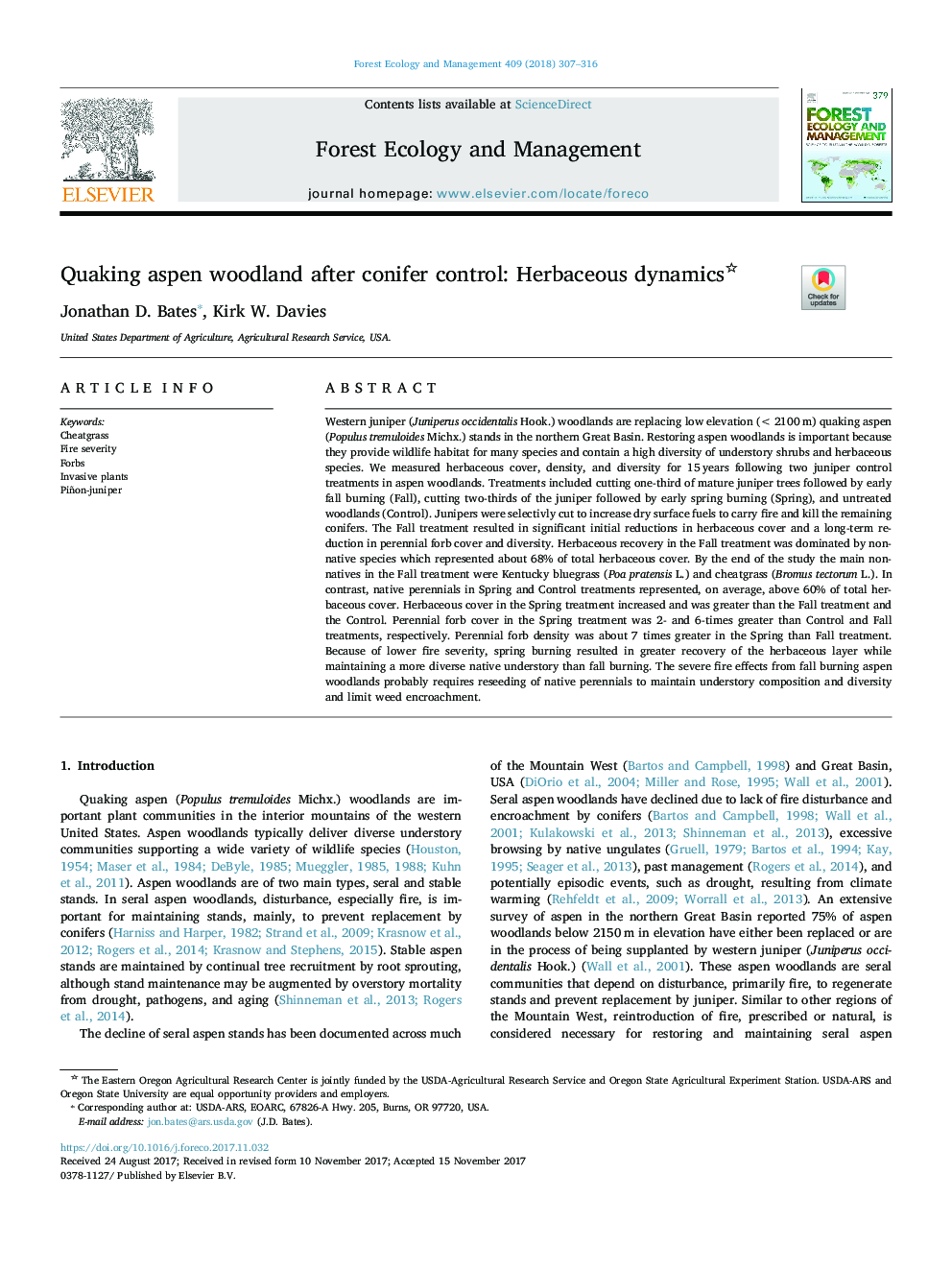| کد مقاله | کد نشریه | سال انتشار | مقاله انگلیسی | نسخه تمام متن |
|---|---|---|---|---|
| 6541904 | 1421349 | 2018 | 10 صفحه PDF | دانلود رایگان |
عنوان انگلیسی مقاله ISI
Quaking aspen woodland after conifer control: Herbaceous dynamics
ترجمه فارسی عنوان
پس از کنترل مخروطی، جنگل زهکشی کوفته: دینامیک علفی
دانلود مقاله + سفارش ترجمه
دانلود مقاله ISI انگلیسی
رایگان برای ایرانیان
کلمات کلیدی
موضوعات مرتبط
علوم زیستی و بیوفناوری
علوم کشاورزی و بیولوژیک
بوم شناسی، تکامل، رفتار و سامانه شناسی
چکیده انگلیسی
Western juniper (Juniperus occidentalis Hook.) woodlands are replacing low elevation (<2100â¯m) quaking aspen (Populus tremuloides Michx.) stands in the northern Great Basin. Restoring aspen woodlands is important because they provide wildlife habitat for many species and contain a high diversity of understory shrubs and herbaceous species. We measured herbaceous cover, density, and diversity for 15â¯years following two juniper control treatments in aspen woodlands. Treatments included cutting one-third of mature juniper trees followed by early fall burning (Fall), cutting two-thirds of the juniper followed by early spring burning (Spring), and untreated woodlands (Control). Junipers were selectivly cut to increase dry surface fuels to carry fire and kill the remaining conifers. The Fall treatment resulted in significant initial reductions in herbaceous cover and a long-term reduction in perennial forb cover and diversity. Herbaceous recovery in the Fall treatment was dominated by non-native species which represented about 68% of total herbaceous cover. By the end of the study the main non-natives in the Fall treatment were Kentucky bluegrass (Poa pratensis L.) and cheatgrass (Bromus tectorum L.). In contrast, native perennials in Spring and Control treatments represented, on average, above 60% of total herbaceous cover. Herbaceous cover in the Spring treatment increased and was greater than the Fall treatment and the Control. Perennial forb cover in the Spring treatment was 2- and 6-times greater than Control and Fall treatments, respectively. Perennial forb density was about 7 times greater in the Spring than Fall treatment. Because of lower fire severity, spring burning resulted in greater recovery of the herbaceous layer while maintaining a more diverse native understory than fall burning. The severe fire effects from fall burning aspen woodlands probably requires reseeding of native perennials to maintain understory composition and diversity and limit weed encroachment.
ناشر
Database: Elsevier - ScienceDirect (ساینس دایرکت)
Journal: Forest Ecology and Management - Volume 409, 1 February 2018, Pages 307-316
Journal: Forest Ecology and Management - Volume 409, 1 February 2018, Pages 307-316
نویسندگان
Jonathan D. Bates, Kirk W. Davies,
